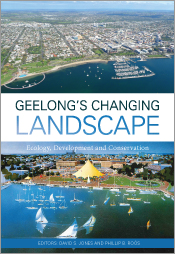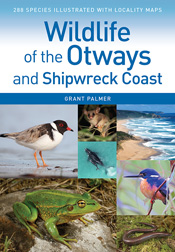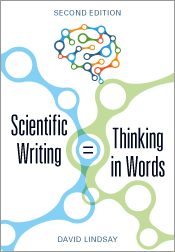Geelong's Changing Landscape

Ecology, Development and Conservation
Edited by: David S Jones, Phillip B RoösA thoughtful exploration of the ecological history of Geelong and the Bellarine Peninsula.
Geelong's Changing Landscape offers an insightful investigation of the ecological history of the Geelong and Bellarine Peninsula region. Commencing with the penetrating perspectives of Wadawurrung Elders, chapters explore colonisation and post-World War II industrial development through to the present challenges surrounding the ongoing urbanisation of this region. + Full description
Expert contributors provide thoughtful analysis of the ecological and cultural characteristics of the landscape, the impact of past actions, and options for ethical future management of the region. This book will be of value to scientists, engineers, land use planners, environmentalists and historians.
Winner, Planning Institute of Australia Awards for Planning Excellence 2020 (Victoria): Cutting Edge Research and Teaching
Shortlisted, 2020 Victorian Community History Awards: Collaborative Community History Award
Reviews
"Not only is it a thorough account of the way Geelong has developed environmentally, socially, and culturally, but it is also an invaluable professional and educational resource that encompasses salient considerations for future development planning in the face of today’s natural and cultural challenges."
Kim Burrell, Historic Environment 31(3) 2019
"The themes in this book would lend it to some interesting problem-solving by VCE students, especially with both land use change and population geography."
Kirsty Brown, Interaction Journal 48(1), 2020
"This is a very comprehensive description of the history, ecology and human challenges, successes and failures in the Geelong region."
Hugh Kirkman, AMSA Bulletin #207, December 2020
Details
Paperback | November 2019 | $ 69.99ISBN: 9780643103603 | 344 pages | 245 x 170 mm
Publisher: CSIRO Publishing
Colour plates, Illustrations, Photographs
ePDF | November 2019
ISBN: 9780643103610
Publisher: CSIRO Publishing
Available from eRetailers
ePUB | November 2019
ISBN: 9780643103627
Publisher: CSIRO Publishing
Available from eRetailers
Features
- The most comprehensive investigation of the history of development and planning of the Geelong region.
- An incisive text that raises challenges about Geelong’s future growth.
- Includes insights from Wadawurrung Elders about the transformation of their Country in the Geelong region.
Contents
ForewordAcknowledgement of Country
Acknowledgements
List of contributors
1: Geelong: Djilang – a tapestry of histories, voices and ecologies
PART 1: ENVIRONMENTAL HISTORY OF THE GEELONG REGION
2: The lay of the land: the geological evolution of the landscape
3: Pre-European vegetation in the Geelong region
4: Welcome to Wadawurrung Country
5: Djilang, Corayo and beyond: the Geelong region landscape and its European transformation
PART 2: ECOLOGY OF THE GEELONG REGION
6: Vegetation changes since European arrival
7: The ecological history of the Bellarine Peninsula: native plant associations before 1835
8: Riverine ecology
9: Marine and coastal environments
PART 3: HUMANS AS AGENTS OF CHANGE IN THE GEELONG REGION
10: Key ecological principles adapted for regional green infrastructure
11: A landscape at risk
12: The Geelong suburban dream: origins, history and future
13: Greater Geelong’s planning future to 2050: determining spatial outcomes through agricultural land planning
14: Emerging cultures
15: The post-Industrial landscape of Geelong
16: Event, fall, return and the transformation of sites: a diagnosis for Point Henry
17: The promise of vision-making a city: a perpetual journey
18: Land use planning challenges facing the Geelong region in the next 10-20 years
19: Ensuring a quality future for the tapestry of Geelong
Index
Authors
David S. Jones is Foundation Professor of Planning and Landscape Architecture at Deakin University. A student of McHarg, he has taught at the University of Melbourne, RMIT University, the University of Adelaide and University of Pennsylvania. His recent work includes incorporating Indigenous knowledge systems in tertiary built environment courses.
Phillip B. Roös is a Senior Lecturer at the School of Architecture & Built Environment and Director of the Live+Smart Research Lab. His work spans across architecture, urban design and planning, landscape architecture, environmental design, teaching and research, as well as writing and art.
Contributors:
Beau B. Beza, Geoff Carr, Peter Dahlhaus, Yolanda Esteban, Murray Herron, Stephanie Ho, Louise Johnson, Gavin Keeney, Kate Kerkin, Kirsten Kilpatrick, Stephen Murphy, Matt Novacevski, Owen O’Carroll, Uncle Bryon Powell, John Rollo, David Rowe, Chris Smyth, Donna Squire, Tandop David Tournier, Mark Trengove, Dennis Williamson, Ross Wissing, Josh Zeunert








